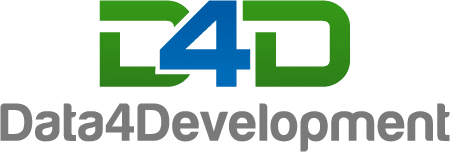The last Open Tea of the year, organised by Data4Development and Partos/The Spindle, took place at Oxfam. During the gathering, some 30 data and other professionals from the International Development sector came together to share their work and their challenges. As always it was an interesting set of presentations, all discussing various ways to gather ground-level data, for example via social media, drones, or through Citizen Generated Data (CGD). This all with the purpose of giving voice to marginalized groups who are not easily visible or whose activities are for example politically sensitive or repressed by powerful companies. The challenge we are set is then: how will we use the new opportunities give to us by ground-level data gathering?
The first case presented came from Anand Sheombar (Hogeschool Utrecht) who discussed his research on the way social media tools are being used by NGO’s. The research shows how the aspects that are intrinsically linked to social media tools, such as collaborating and sharing and reusing information, can be of great benefit to NGOs (for example when crowdsourcing information from the ground level; improving access to information for marginalized groups; and as a fast and informal way to spread information. All aspects that can align very well with the organisational goals of NGOs working in International Development! However, organisations have to be aware of the pitfalls and responsibilities that come with social media tools. A short exercise in the group showed how little knowledge there was of social media tools which are not used in our own geographical area and therefore a disconnect is possible. Additionally there are issues to look out for, such as the rise of fake news and the dominance of english instead of local languages. At the request of other Open Tea participants, Anand came up with one main don’t for NGOs who want to use social media (better): Don’t have your marketing person be responsible for your NGOs social media – there is so much more to these tools than great exposure. His main do? Try things out and put yourselves in the shoes of you user: Experiment!
Those interested in learning more and joining the discussion can do so in the Facebook group SoME4D.
The second case of the day was presented by Maxime Eiselin (IUCN NL) who shared web-tools that allow you to make use of GIS for development and, in the case of IUCN specifically: nature conservation. Besides the online tools, IUCN also uses other innovative tools like drones to monitor biodiversity to influence decision making. These tools combined show IUCN and its partners what is really happening in the landscape. They are given a clear insight in land use and the tools enable them to gather information in inaccessible remote or dangerous places. Maxime shared that Youtube is a great place to learn more about the practical use of drones. They are also getting easier to fly with and cheaper to buy, making them more interesting for NGOs to use in their work. Participants in the room were interested in how you can deal with the vast amount of data that is collected in this way, now that data collection is becoming easier. The answer to this question is to not only make use of innovative tools for collecting data, but do the same for analysis: according to Maxime, more and more companies are now able to use technology to interpret data in a new way.
The final presentation of the day came from a duo from the Leave No One Behind (LNOB) platform: Suhani Bhushan (Civicus) and Tiny Hoving (Red een Kind) made a case for data disaggregation for inclusion – showing that not only there is a lack of data in certain regions, but that especially the most marginalized groups are often underrepresented in that same data. Splitting up available data may show how specific subgroups – often the people that should be the focus of our efforts – are really doing. For example, while a dataset initially shows a group of children doing well in school and meeting the target, disaggregating the dataset may show that within that group, it is the rich children meeting the target, while the poor ones are lagging behind. Suhani additionally showed how Citizen Generated Data (CGD) can be a very good way to complement government or institutional data, specifically when collecting data about underrepresented groups, while in the process also enhancing ownership of and engagement with that same data. It must also be acknowledged however that getting CGD comes with important challenges, such as making sure data is representative and has a certain credibility. But in the end, to Leave No One Behind means that data is the means and people are the end – not the other way around!
We thank everyone for joining us and we hope to see you next time!
The Open Tea is hosted four times a year by Data4Development and Partos/The Spindle. It is an informal network meeting about information & data giving data professionals the opportunity to meet and get to know each other. The aim is to learn from each other’s (data) challenges and provide fresh insight or new points of view rather than merely sharing success stories.
Interested in this event and other future activities? Join D4D’s Meetup group of Data Professionals in the Development Sector to be the first one informed about new learning events. If you like to host an Open Tea at your organisation, or if you like to present your case and discuss your questions with a group of peer data professionals, let us know, via the group or by contacting Maaike Blom at [email protected].
